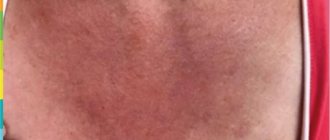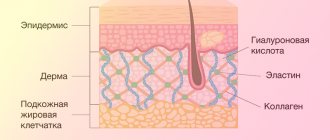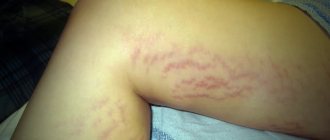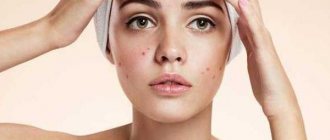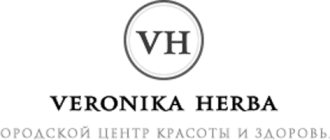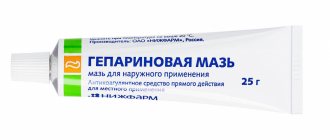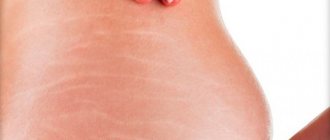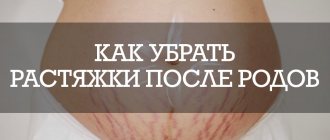What are stretch marks on legs
Striae on the legs (in common parlance – stretch marks) are defects on the skin that appear, depending on age, in the form of white, pink or blue stripes. In essence, these are scars resulting from microtraumas, ruptures of the upper layers of subcutaneous tissue. Outwardly, they look like “scars” of torn edges and connective tissue between them, differing in length and width. A single appearance of stretch marks is extremely rare; more often they appear in groups. Pink (red), purple or blue color of stretch marks on the legs indicates that they appeared no more than a year ago.
As a rule, young scars itch, which indicates the process of regeneration of damaged fibers. It is easier to fight such stretch marks and you can do it even at home. White “scars” on the legs are already healed injuries that are more than a year old, and therefore folk remedies and cosmetic creams will only help narrow them down a little. Tanning also does not help eliminate such a defect, since melanin is not produced at the sites of breaks, and the skin does not darken at all. It is possible to make stretch marks almost invisible only in a salon setting.
How to remove stretch marks?
Treatment of stretch marks is a difficult and lengthy process that requires a professional approach to the problem, followed by a comprehensive course of manipulation.
By contacting Dr. Korchagina’s clinic, dermatocosmetologists will conduct the necessary diagnostics and select procedures:
- dermabrasion - a technique consisting of mechanical grinding with removal of skin layers; manipulation not only reduces the visibility of stretch marks, but also restores the structure of epidermal tissues;
- microneedle RF lifting INFINI - an innovative rejuvenating technology that causes tissue coagulation and collagenogenesis through the use of a fractional microneedle system;
- chemical peeling is a manipulation based on the application of strong organic acids to the stretch marks, which burn the epidermis and promote the synthesis of its own collagen fibers;
- PRP plasma therapy Regenlab - cellular rejuvenation of the skin through microinjection of its own purified and enriched plasma; plasma lifting stimulates the work of fibroblasts, and also promotes the production of elastin and collagen;
- facial mesotherapy – injection of meso-cocktails provides deep hydration and restoration, accelerating metabolism and nutrition of damaged skin;
- thermolifting – a hardware technique using the Palomar StarLux 500 laser machine improves blood circulation, metabolism and lymph flow; due to which the skin is regenerated and straightened.
Why do they appear?
The most common opinion about the reasons for the appearance of stretch marks on the inner and outer thighs and calves is a sharp change in weight in a larger direction. As a result of the sudden accumulation of a large amount of subcutaneous fat, the skin fibers do not have time to stretch and therefore tear. Also, the reasons for the appearance of stretch marks may be:
- increased physical activity or lack thereof;
- fast weight loss;
- changes in hormonal balance in the body, including as a result of puberty in adolescence;
- malfunction of the pancreas;
- pregnancy, lactation period (for women), during this time stretch marks often appear on the knees;
- obesity;
- problems with the endocrine system;
- long-term use of medications belonging to the glucocorticoid group;
- hereditary, genetic predisposition;
- use of anabolic steroids, sharp gain of muscle mass (for athletes);
- intensive growth;
- eating disorder;
- adrenal hyperplasia;
- the presence of Marfan or Ehlers-Danlos syndromes;
- lack of collagen, elastin, vitamins and essential microelements.
Main areas
Purple stretch marks primarily form in areas that are most susceptible to changes due to weight changes:
- On the chest. Pale purple small stretch marks on the breasts most often appear during pregnancy or breastfeeding, but can be observed as early as puberty due to hormonal changes.
- Striae on the abdomen also usually occur during pregnancy: this is facilitated by the rapid increase in the volume of the uterus.
- On the hips. This area is also problematic: any fluctuations in body weight can lead to the formation of stretch marks in this area.
How to remove stretch marks on legs
To prevent the appearance of stretch marks, it is necessary to carry out prevention to maintain skin elasticity in the form of proper nutrition, the use of a contrast shower, and moisturizing creams in problem areas. It will not be possible to get rid of existing stretch marks on the legs overnight; this will require time and an integrated approach or the help of a specialist. Before selecting an effective treatment method, it is important to determine the type of stretch marks.
To combat young stretch marks in any part of the legs, you need to balance your diet, do water douches and exercise, use special cosmetics (scrubs) and methods (wraps, peeling). You can use traditional medicine (masks, creams, oils) and medications (Kontratubeks, Mederma). A dermatologist-cosmetologist will help you cope with old scars on your legs by prescribing a number of salon procedures: mesotherapy, laser peeling, massage.
- Hair care tips at home
- Insulation of the floor in a wooden house from below
- Vegetable soup: recipes with photos
Methods for eliminating stretch marks
How to get rid of stretch marks on legs? The main condition in the fight against atrophic stripes is timeliness. Elimination of the defect should begin from the moment when the first signs of stretch marks begin to appear. This will ensure high efficiency and quality of procedures.
Cosmetology offers a number of methods aimed at getting rid of an unaesthetic defect, namely:
- Laser therapy. Depending on the extent of the cosmetic defect, the type of skin and the age of the stretch marks, laser exposure will help completely eliminate or make atrophic stripes less noticeable in just a few sessions.
- The use of ointments, creams, serums, lotions and other cosmetic products will prevent the occurrence of stretch marks, as well as make them less noticeable or completely eliminate them (provided they are of low prevalence and timely use).
- Mesotherapy will help eliminate stretch marks on the legs due to hormonal changes and other factors. This is a method that activates collagen synthesis in atrophic stripes. A set of procedures will ensure the density of the damaged skin area and natural color.
- Removing areas of atrophied stripes is important in a situation where sagging skin is very pronounced and cannot be eliminated by other methods. Often sagging appears when a person loses excess weight very suddenly. The operation consists of removing excess skin, subcutaneous fat and stretch marks.
- Massage procedures, wraps, applications using cosmetics for stretch marks, sesame oil, olive oil, cocoa and other natural ingredients such as honey, algae.
To determine how to get rid of all stretch marks on your legs, you will need to consult a cosmetologist. He will identify the cause of the appearance of stretch marks and give recommendations on each method regarding its effectiveness and safety.
Treatment at home
You can combat stretch marks on any part of the legs at home using several methods that must be used in combination. The most important thing is to balance your diet, for this you need:
- Drink at least 2-2.5 liters of clean water without gas every day. This will help prevent dehydration, premature aging of the skin, maintain its elasticity and prevent the appearance of new stretch marks.
- There are different types of meat, liver, fish, fresh vegetables, fruits, eggs, dairy products. They promote weight loss, maintain normal weight, and prevent the occurrence of stretch marks on the legs.
- Avoid fatty, fried, salty, smoked foods, sweet carbonated drinks and fast food dishes, which contribute to excess weight gain, which often provokes the appearance of stretch marks on the surface of the skin of the legs.
- Eat citrus fruits or drink ascorbic acid. Vitamin C promotes collagen production and normalization of metabolism.
- Take medications with fish oil, vitamins A, E, and zinc.
After reviewing your diet and changing your diet, proceed to other methods for eliminating stretch marks at home. These include:
| Name | Kinds | Method of influence |
| Skin cleansing | Baths with different types of clays, essential oils | Cleanses, tones, refreshes the skin, helps eliminate toxins |
| Peelings, scrubs | Perform mechanical cleaning, open pores, prepare the epidermis for applying creams | |
| Impact on problem areas with special compounds | Foot wraps | Saturates with nutrients, enhances collagen production, improves skin tone |
| Oils, their mixtures | Nourish and moisturize the skin. | |
| Foot masks | Smoothes, nourishes the skin, improves its texture | |
| Medicinal cream for stretch marks on legs, ointment | Eliminate scars, promote cell regeneration | |
| Massage | Self-massage (vacuum cupping, manual) | It is carried out using various compositions, massage oils, promotes tissue regeneration and eliminates cellulite |
| Rubbing | Performed after taking a bath using a massage brush. The method helps improve blood circulation and improve skin tone. |
Exercises
Physical exercise will also help remove stretch marks on your calves, knees, and outer and inner thighs. Lunges and squats are considered the most effective, but if for health reasons you cannot do them, do others. For example, these exercises:
- Birch. Lie on the floor, lift your legs using your abdominal muscles and place them behind your head, supporting yourself with your hands. Support your torso with your hands in the area of the shoulder blades, straighten your legs to a vertical position. The support should be on your elbows, touching the floor only with the back of your head, shoulder blades and elbows. Freeze in this position for at least half a minute. Return to the starting position.
- Lifting legs with minimal amplitude. Lying on the floor, raise your straight legs 20 cm from the surface, fixate for 10-15 seconds and lower them just as slowly. Do 3 reps.
- Alternate leg lifts. Starting position – lying on the floor, the whole body pressed to the surface. Raise one leg to an angle of 45-60 degrees, hold for a couple of seconds, lower. Do the same movement with the second limb. Do 3 sets of 15 lifts on each leg.
- Leg raises while lying on your stomach. Lie on your stomach, press against the floor. Alternately raise your legs to the maximum height possible for you, then lower them. Do 30 repetitions for each limb.
- Lifts from the half-bridge position. Lying on the floor, bend your knees at a right angle, lift your pelvis. Leaning with one foot on the floor, lift the other up and lower it after 5 seconds. Do 2 sets of 20 reps for each leg.
Ways to combat stretch marks
It can take a lot of time to remove stretch marks, so you need to act as soon as stretch marks appear. The set of measures will include salon procedures, wraps, massages, cosmetics and traditional medicine.
Cosmetics and medicines
There are a variety of products on the market, but they are effective only in combination with other methods and at the initial stage. It is impossible to get rid of old stretch marks using cosmetics.
Cosmetics do not remove stretch marks, but only make the skin elastic and improve cell regeneration.
The most popular means:
- This is a hypoallergenic cream that is suitable for pregnant and nursing mothers.
- Gel cream from Decleor. A product based on essential oils that copes with old stretch marks.
- PregnaCareC Accelerates the skin restoration process.
- The gel deeply nourishes, moisturizes and restores the skin.
- Cream from COLLISTAR. Due to the amino acid content, the product reduces the visibility of skin defects.
- BodyExpert from Faberlic. The cream evens out and lightens stretch marks on the legs.
- Cream from Vichy. It has a double effect on problem areas and can be used for prevention.
To obtain the effect, cosmetic products must be used for at least 2-3 months.
Traditional methods
To get rid of stretch marks on the thighs without resorting to the services of beauty salons, you need to start with proper nutrition. With a sufficient supply of vitamins and microelements, the condition of the skin improves.
The most important:
- vitamin C – found in citrus fruits, rose hips and black currants;
- vitamin E – nuts, dried apricots, vegetable oil;
- vitamin A – fish oil, carrots, liver;
- zinc – gelatin, cocoa, liver.
Along with proper nutrition, you need to do stretching exercises every day. This can be a complex to strengthen the abdominal muscles, buttocks and thighs.
Store-bought cosmetics for stretch marks are expensive.
Therefore, you can prepare cheap but effective creams at home:
- Ointment based on essential oils. You will need 10 drops each of lemon juice, orange, lavender, jasmine, rosemary and jojoba oils. Mix the ingredients and leave for a day. Rub into problem areas.
- Cream with mummy. Two mummy tablets are dissolved in 1 tsp. warm water, then add 1 tbsp. l. baby cream Apply the cream to areas of the body where there are stretch marks.
Stretch marks on the legs can be removed with peeling. This procedure enhances the production of collagen and elastin, so regeneration processes are accelerated.
You can purchase the scrub in a store or prepare it yourself:
- Coffee. You will need Johnsons Baby butter, 100 g of ground coffee and a little sea salt. You should get a thick mass, apply it for 10 minutes, repeat every other day.
- Sugar and salt. You will need 1 tbsp. l. sugar and salt, a little butter. It is better to apply to damp skin with massage movements.
Massage
To remove stretch marks on the legs, especially on the inner thighs, you cannot do without a massage.
To speed up the effect during the procedure, use oils:
- orange;
- rosemary;
- almonds;
- jojoba;
- wheat sprouts.
They increase skin firmness and elasticity. Massage should be done at least 3-4 times a week. When massaging problem areas, do not use stretching movements (for example, rubbing). Pinching, tapping, effleurage, and vibration are effective.
There are other massage techniques that are used at home:
- Honey. Apply honey by patting until completely absorbed.
- Hydromassage. Performed using a contrast shower.
- Canned. You can buy jars at the pharmacy, massage them on steamed skin.
Wraps
If little time has passed since the appearance of stretch marks, wraps are effective. The active composition is applied to problem areas, then the area is wrapped in polyethylene. Thanks to the thermal effect, the active ingredients penetrate deeper into the skin faster.
For wraps use:
- honey;
- blue clay;
- chocolate or coffee;
- Dead Sea mud;
- seaweed.
It is seaweed-based wraps that are considered the most effective against old red and blue stretch marks.
Salon treatments
Beauty salons offer treatments that effectively deal with even old stretch marks.
Cosmetology techniques:
- Laser resurfacing. The top layer of skin is removed using a laser.
- Mesotherapy. These are injections of substances that promote the production of collagen and elastin.
- Chemical peeling. Removing the upper layers of the epidermis using acids. Pain is likely, so the procedure is performed under local anesthesia.
- Radio lifting. Reducing stretch marks using electric current.
- Ozone therapy. Subcutaneous administration of ozone and oxygen. The most effective procedure is after peeling.
Salon treatments
If the stretch marks are old, home methods do not help you, or you want to get rid of stretch marks as soon as possible, seek help from a specialist. This could be a cosmetologist in a salon or a dermatologist in a clinic. The following procedures have proven themselves well in the fight against stretch marks:
| Name | Description | pros | Minuses |
| Mesotherapy | It is carried out by administering vitamin and nutritional injections to the client, the composition of which is selected individually. Course – 7-15 procedures. |
|
|
| Laser therapy | A specialist uses a laser to treat scars. There are two types of therapy: superficial (peeling), aimed at eliminating young stretch marks, and deep (resurfacing), which copes with any stretch marks. |
|
|
| Chemical peeling | The cosmetologist makes a controlled burn on the problem area using special chemicals, as a result of which intensive cell restoration begins. The procedure can be superficial, middle and deep. |
|
|
| Algae wraps | They are carried out using kelp or spirulina, pre-soaked in warm water. Seaweed is applied to areas with stretch marks, and then the legs are wrapped in plastic wrap for an hour. Course – 12 procedures. |
|
|
| Cosmetic surgery | It is used when the skin is very sagging and can only be restored by removal. |
|
|
Creams and gels
The main difference between store-bought creams and homemade creams is that the ratio of ingredients in them is precisely adjusted, and numerous tests have made it possible to obtain a truly effective and safe composition. In addition, some active substances will be very difficult for you to obtain on your own. For example, FERMENCOL® brand products contain an extract from crab liver. Agree, it will not be so easy to get it!
When choosing a suitable cream or gel, it is important to understand the purpose of the product. Here are some of the main types of products to combat stretch marks:
- Preventive . For example, creams and oils used during pregnancy to moisturize and increase skin elasticity. However, they will not affect existing stretch marks after childbirth.
- Remedies for fresh stretch marks . They are effective if the stretch marks on your thighs have not yet turned white.
- Remedies to combat old stretch marks . Such gels and creams contain active ingredients that allow you to cope even with old stretch marks that appeared more than a year or even several years ago.
Pros : Creams, oils, mousses and gels for stretch marks are the most budget-friendly of all the options that can be called effective. With the right product, you can deal with both fresh stretch marks and old ones, without trips to the salon or traumatic procedures. This is especially true for young mothers who cannot afford to leave home often and for a long time, but want to quickly return their skin to a healthy appearance.
Cons : It is very important to choose the right product and follow the instructions exactly . If a specialist does everything for you in the salon, then you need to approach the process yourself with full responsibility, do not skip procedures and apply the cream or gel within the prescribed period. Sometimes, to increase efficiency and speed up the process, the use of additional devices is required, but the good news is that they are not too expensive and are available for free sale.
Folk remedies
In the fight against stretch marks, remedies prepared according to traditional medicine recipes have proven themselves well. The following drugs are effective in the treatment of striae:
- Oil mixture used during massage. Mix ¼ cup of avocado oil with rosemary, jasmine, neroli, lavender, red rosemary esters, taken 10 drops each. Leave for a day in a dark place, use with each procedure.
- Mix for chocolate wraps. For it you need to melt a bar of dark chocolate, mix with 1 tsp. olive oil. The mixture should be applied to areas with stretch marks, wrapped in film and covered with a blanket. Wash off after 40 minutes, do every day until the desired result is achieved.
- A scrub made from sugar, salt, taken in equal proportions, and a few drops of oil (linseed, peach, sesame, etc.). Apply the mixture to the skin and scrub it with massage movements. Leave on for 30 minutes, then rinse off.
- Mask against stretch marks. Melt two squares of dark chocolate and, after cooling, pour into a blender bowl. Add a glass of coffee grounds, ½ cup each of honey and potato starch, 0.5 tsp. salt, stir. Apply the mixture to stretch marks, leave for 0.5 hours, then rinse.
- Oil-vitamin composition of 5 drops of vitamin A, 10 drops of vitamin E, aloe and olive oils, taken in equal quantities. The mixture should be applied to problem areas twice a day.
Prevention
The fight against stretch marks is a long process, and in some cases very expensive. To avoid using the above methods on yourself, prevent the appearance of “scars” by following the following recommendations:
- eat right;
- watch your weight;
- do self-massage or visit a massage therapist;
- drink plenty of fluids;
- play sports, do physical exercises;
- use moisturizing, nourishing creams, gels (special ones for pregnant women);
- Wear compression garments during pregnancy;
- take a contrast shower, herbal baths, douse yourself;
- take care of your skin.
